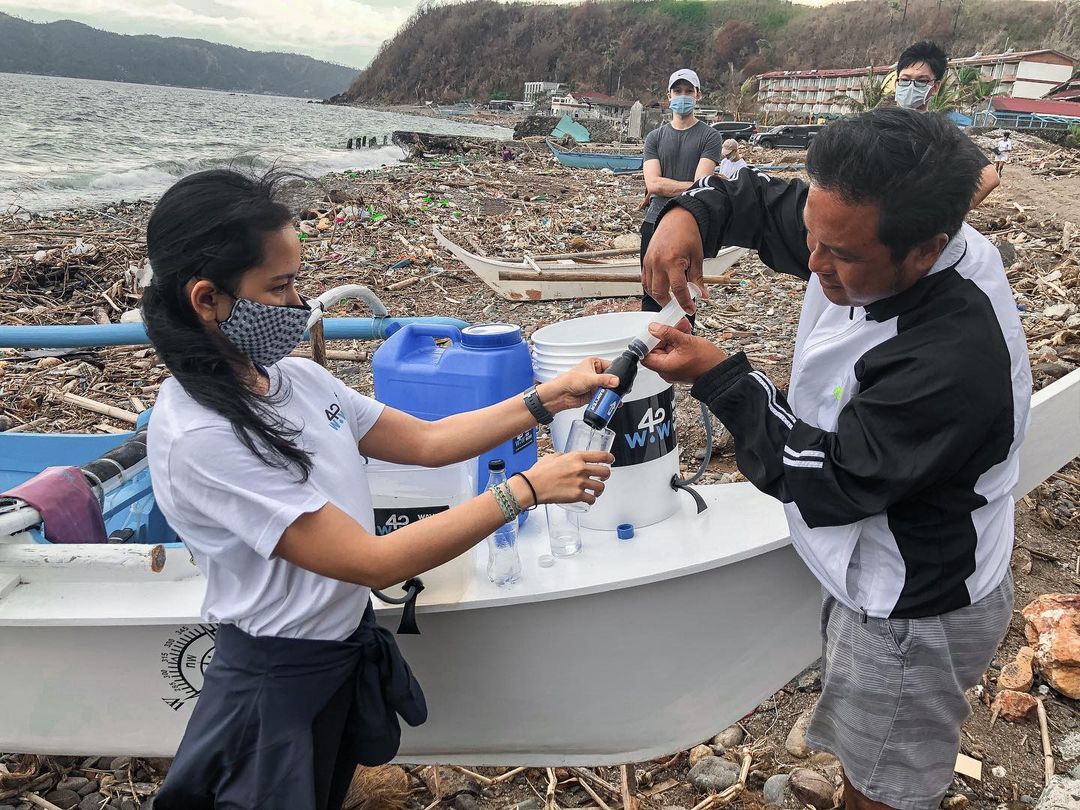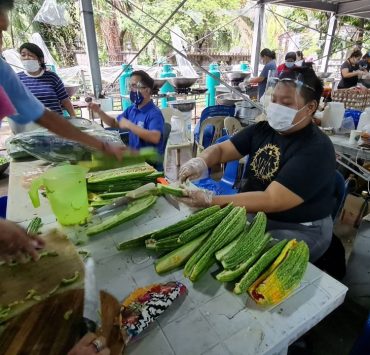One of the major survival necessities affected by floods is clean water. Due to the contaminants often carried by floodwater, the usually potable water from household taps can become undrinkable. With local distribution systems affected, having access to clean drinking water can be difficult, with people running the risk of being dehydrated.
This is why it’s important to provide flood victims a source of drinking water in addition to food, clothing and personal hygiene kits. A default option would be to donate heaps of bottled water, but after relief operations, these empty plastic bottles end up adding to the piles of trash that may contribute to flooding. With the harm that plastic bottles do to our environment, it might be wiser to look for alternatives.
Enter this portable water filtration system from the global humanitarian aid organization Waves for Water. Unlike single-use plastic bottles, it can provide clean water for a small village with just one filtration system—which, if maintained properly, can last for many years.
View this post on Instagram
A post shared by Waves For Water Philippines (@wavesforwaterphilippines)
“On average, people who rely on vended water from refilling stations spend at least P20 per 20 liter jug or P600 per month. The use of a filter will allow a family to save at least P7,200 per year,” states Waves for Water. The organization also notes that using a filtration system “reduces the need to ship bottled water” which is resource-intensive and can have a harmful impact on the environment.
Called the MVP Point One filtration system, Waves for Water’s innovative product is installed in a bucket, a common household item. The entire system, including the bucket, costs P2,850 per unit. It can serve a minimum of 10 families or 50 people, making it ideal for community relief.
“The MVP filter provides a more sustainable source of potable water to communities in need. Often, there are existing water sources but people are unable to drink them due to microorganism contamination and high turbidity which the technology is able to address,” states Waves for Water.
View this post on Instagram
A post shared by Waves For Water Philippines (@wavesforwaterphilippines)
In line with the need created by the recent typhoon, Waves for Water Philippines is currently pooling donations to supply buckets and provide a sustainable source of clean drinking water to Cagayan, Tuguegarao and Catanduanes. Since ease of use is important for equipment during typhoon relief operations, the MVP filter also ensures convenience to calamity-stricken communities.
“It does not need electricity to operate—only gravity. Instructions in Tagalog are also placed at the back of the bucket to ensure operation of the system is easily understandable. Maintenance is [also] simple, the filter just needs to be backwashed with clean water and the whole kit comes with a cleaning coupling and syringe to do this,” says the organization.
Take note that while putting muddy water in bucket tap filters will not change its effectiveness in removing harmful pathogens, backwashing will be required more frequently. It also removes the taste that comes from bacteria and dirt, although taste improvement is not its main priority. Bucket tap filters must be stored in a cool, dry location away from ultraviolet exposure as well, and it is not dishwasher-safe.
View this post on Instagram
A post shared by Waves For Water Philippines (@wavesforwaterphilippines)
The MVP filtration system exceeds the Environmental Protection Agency requirements. With a filtration rate of 0.1-micron absolute, it is able to trap bacteria and protozoa which may cause waterborne diseases like cholera, botulism, typhoid and amoebic dysentery. “It does not, however, use ultraviolet filtration or reverse osmosis that purifies water and removes dissolved salts and other chemicals or heavy metals,” states Waves for Water.
“Since there is such a high flow rate, this eliminates the need to store water which reduces the chances of water being contaminated after it is filtered,” the group adds as well.
The organization also says that during its implementation of the system in provinces, the buckets are assigned per household. Some families opt to share the filter system with their neighbors by creating schedules or shifts.
For more information, visit Waves for Water’s website or official Instagram page or email [email protected].
Header photo from Waves for Water Philippines
Get more stories like this by subscribing to our weekly newsletter here.
Read more:
These food drives are sending warm meals to #UlyssesPH survivors
Bottled water drinkers consume 90,000 more microplastics
The country’s first water reservoir is opening its doors in 2020
Writer: YANN MAGCAMIT




